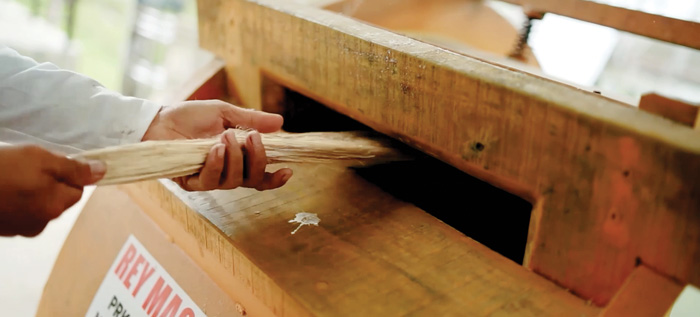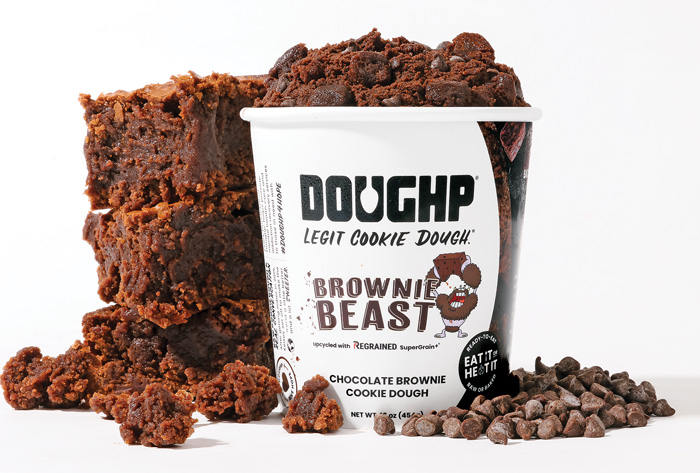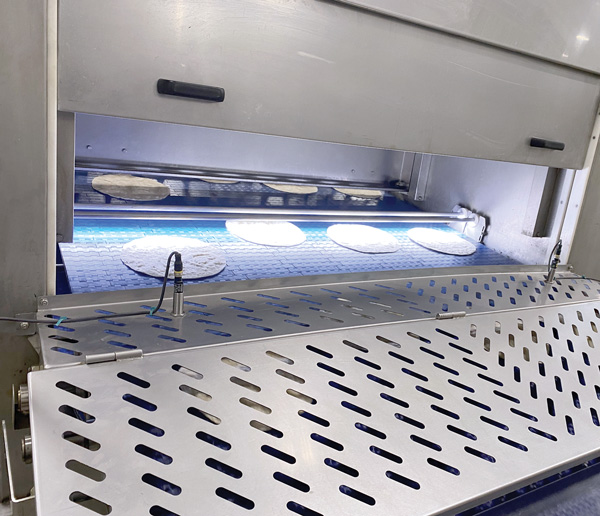
Holding the Line on Food Loss
Food companies are waking up to opportunities to reduce food lost during processing, setting ambitious goals, and finding value in byproducts and side streams. It’s not easy.
Article Content
Food loss during processing has long been considered a cost of doing business, but recent events, including the COVID-19 pandemic and subsequent supply chain snarls, have cast a bright light on faults in the food system, prompting food manufacturers to look for new ways to minimize waste. Some, including many startups, are exploring new markets and uses for byproducts to create value from the inevitable waste they produce. Others are taking an in-depth look at their processes with the goal of implementing new technologies and alternate methods to mitigate loss at the outset.
Traditionally, loss due to processing hasn’t been a major focus for food companies and sending byproducts to landfills has been both easier and cheaper than finding solutions to minimize loss, or finding new uses for it. But it’s no longer business as usual. Local landfills are filling up and closing, disposal regulations are changing, and many food companies are making aggressive environmental sustainability commitments, which include food loss reduction.
Consumers are driving change as well. “Consumers are realizing that their purchases really make a difference and are holding different companies accountable for trying to prevent waste and doing their part in reducing climate change,” says Maddison Gurrola, a food scientist at food development company Mattson.
Shedding Light on Loss
But while consumer awareness around issues of food loss and waste grows, food companies are sometimes in the dark about where food loss occurs during production and its financial impact on their operations. “Most businesses do not recognize how much money they’re throwing away for having inefficient processes,” says Martin Gooch, CEO and partner at consultancy VCM International and co-author of the report The Avoidable Crisis of Food Waste. Loss can amount to 20% of revenue, he estimates. “Often, [it’s] because it’s the way things have always been done,” says Gooch.
It’s not until the financial toll of waste is made clear that companies take it seriously. “It represents an enormous opportunity because by addressing the root causes of food loss and waste, you will often address the root causes of other factors that also impact your business,” says Gooch.
The World Resources Institute (WRI) examined the business case for companies to reduce loss and waste. After reviewing 1,200 business sites across 700 companies in 17 countries, WRI found that nearly every site evaluated achieved a positive return. “The median company had a 14 to one return on investment,” says Liz Goodwin, senior fellow and director of food loss and waste at WRI. “I think over 95% of them had a positive return on investment. And most of the improvements required were low cost or no cost investments—less than $10,000.”
Creating New Value Streams
Food waste mitigation efforts can be about more than just streamlining production to save money; upcycling food waste into new ingredients presents an opportunity to create additional revenue streams. And as the emphasis on food waste reduction grows, so too does the popularity of upcycling. The Upcycled Food Association has grown rapidly since its founding in 2019 and today has more than 200 members ranging from startups to established food companies. It’s a clear signal of the strong interest companies have in creating new uses for—and revenue streams from—food that would otherwise be lost during processing.
Mattson was the first associate member of the Upcycled Food Association and has a long history of upcycling, says Barb Stuckey, Mattson’s chief innovation and marketing officer. “About five or six years ago is when we started to get more calls from potential clients who, as part of their sustainability initiatives, were looking to have us help them figure out what to do with manufacturing waste,” says Stuckey.
In 2021, the Dole Sunshine Co. (DSC) partnered with Singapore’s Economic Development Board to set up Dole Specialty Ingredients (DSI), a new business arm focused on finding uses for its fruit waste as part of DSC’s commitment to eliminate loss by 2025. “The basic principle for this future core business is to utilize the side stream or the waste streams coming from the farms and the factories to produce something valuable,” says Managing Director Weitze Ooi.
DSI started with six products, focusing on banana, papaya, and pineapple waste. DSI produces a green banana powder from rejected bananas—which can total 10%–15% of the annual harvest. And papaya skins receive a second life via the extraction of the enzyme papain, which along with the oil from papaya seeds, is used in personal care products.
From the discarded pineapple stems, the company extracts bromelain, an enzyme sought after for its medicinal benefits. After pineapple juice production, DSI takes the pomace and makes a dietary fiber. And from pineapple leaves, usually discarded as agricultural waste, fibers are extracted and combined with polylactic acid to create Piñafelt, textile company Ananas Anam’s nonbiodegradable leather alternative nonwoven mesh.
DSI continues to experiment with ingredient applications such as using pineapple fibers in baked goods, smoothies, and yogurt, and is exploring the potential for moving into the consumer market with unique food products from waste. “We want to make sure that our ingredients can be widely used in a lot of applications,” says Ooi.
Currently, DSI operates a small pilot plant within the Dole facilities in the Philippines, but plans include scaling the model to other Dole operations. Logistics are the biggest challenge, says Ooi; production needs to be close to farms to minimize spoilage and ensure transportation is cost-effective. “The side stream can easily rot if you keep it outside of the factory for a long time,” he emphasizes.
Connecting the Dots
While large manufacturers like Dole are spinning up internal business units focused on solving food loss in their operations, smaller companies and startups are finding ways to create new products—both finished consumer goods and food ingredients—from food waste. Berkeley, Calif.-based ReGrained began business with snack products made from spent brewers’ grain, but the long-term goal was always to create an ingredient supply business, says co-founder Daniel Kurzrock. The company started its Upcycled Food Labs as a wholesaler that helps companies develop upcycled food products.
There’s an enormous amount of supply, he says; the trick is to connect the dots between suppliers, food companies, and consumers. “The key is going to be in getting the large-scale commercial players to actually bring these products into their supply chains and develop new products with them,” says Kurzrock.
That could mean line extensions, new brands, or other ways to use up waste and make money doing it. ReGrained’s Upcycled Food Lab partnered with edible and bakeable cookie dough brand Doughp to create the Brownie Beast flavor. Incorporating SuperGrain+—ReGrained’s upcycled ingredient made from spent brewers’ grain—gives the chocolate cookie dough twice the protein and six times more fiber than Doughp’s other flavors.
Early-stage startup Hyfé Foods is developing the technology for an enzymatic-based processing method to turn sugar water—a byproduct created by many processors, including breweries, corn refineries, and canning operations—into mycelium flour. The company just received $2 million in its first round of funding, and a $450,000 grant from the U.S. Department of Energy.
The model is to co-locate at processing facilities, which would pay the startup a fee. Hyfé Foods is looking for its first partner company. It’s a win-win, says co-founder and CEO Michelle Ruiz. These companies already pay a hefty premium to dispose of their wastewater, and Hyfé’s technology would help them meet their sustainability goals. “Often, people don’t think about their wastewater as something that’s contributing to their greenhouse gases,” she says. “But water ends up being not only something that contributes to emissions, but also something that is very expensive for these factories, both in treatment and in the usage.”
Hyfé’s process entails taking food-safe manufacturing water byproduct, pretreating it, and then putting it into a fermentator with fungi and oxygen. In 24 hours, the fungus grows into large white balls. Those are harvested, dried, and ground into a flour that is low in carbohydrates, gluten free, and suitable for use in alternative protein products. The customers for this product will be food manufacturers and foodservice, Ruiz says. Manufacturers are mostly excited about the cost incentives, she says, consumers are interested in the environmental benefits, and investors are attracted to the supply chain solution and potential positive effects on food security.
Fine-Tuning Existing Systems
Companies like Bimbo Canada are achieving significant food waste reduction via manufacturing process improvements. After determining its baseline using 2019 numbers, Bimbo Canada set an ambitious food waste reduction target: 50% by 2025. It’s a huge undertaking, according to Director of Environment and Sustainability Jeff Robertson, because the company runs 40 lines across 16 bakeries, making hundreds of products and constantly adding new ones. “It’s really kind of all hands on deck because that’s a very steep reduction,” he says.
The first step was to hire a consultant, who identified potential savings of CA$1.6 million annually, including CA$790,000 in just one factory, and 3.3 million pounds of annual food saving. The company began with easy wins, and it completed 40 projects in 2021.
New products can create small inconsistencies in production lines and several of the projects focused solely on tracking products and identifying where in a process loss was occurring, says Robertson. A loaf of bread, for example, would turn slightly 30 degrees to the left, enter the slicer sideways, and then have to be thrown out. The company also discovered that reglazing baking pans more frequently paid off with better end product and performance.
Vision systems to ensure products are in spec—checking tortillas’ color for overbake and shape—reduced the chance for misshapen tortillas to clog up the line while also revealing that a tweak in production would allow for the misshapen dough to be reintroduced in the process and avoid wasting it. “Little tweaks like that have a big impact,” says Robertson. “Our food waste reductions last year were to the tune of around 400,000 kilos of food.”
It is often small input variation and lack of quality control that cause losses during production, agrees VCM International’s Gooch. He cites the example of a bakery that tested flour for moisture content only at the beginning of the week and then determined how much water was needed in the dough mix, even though the bakery received new flour deliveries during the week. Those weren’t tested, and the resulting dough was substandard.
“You have variability in inputs, which led to variability in productivity, production, yield, and misshaped products,” he says. “They did not connect it to the fact that they weren’t correctly measuring inputs.”
Many of Bimbo’s approaches to loss aren’t revolutionary ideas, says Robertson, but taking the time to test and ensure quality standards are being met pays off. “If you can really drill in for every single SKU, you’ve got it zoned into exactly where you want to move it, [and] then you can sort of optimize the whole system,” he says.
Some projects, however, require more capital investment, he notes, like replacing machines that still function with newer machines with tighter tolerances that run more efficiently and reduce waste. With production running round the clock, that capital investment can quickly pay off. “Those savings really add up,” Robertson observes.
Food waste is a market failure, says ReGrained’s Kurzrock. “I see it as a missing market where you have latent demand from food developers that are looking to create products with a great story that are great tasting and that have great nutritional properties.”
The commonality among all groups—business, investors, and consumers—is that no one likes waste, says Kurzrock, but it often takes a disruptor to prompt new approaches. “One of the things that we’ve done with this upcycled food movement has shown that waste doesn’t need to be a cost of doing business,” he says. “Universally, everybody hates waste. And that makes it a relatively simple platform to get buy-in on.”
Key Takeaways
- Food manufacturers are facing increased pressure from consumers and regulators to take a closer look at the food wasted during processing.
- Fixing inefficiencies in production processes and upcycling byproducts into value-added ingredients are two ways manufacturers are reducing food waste.
- Reducing food waste results in a positive return on investment for most companies.













